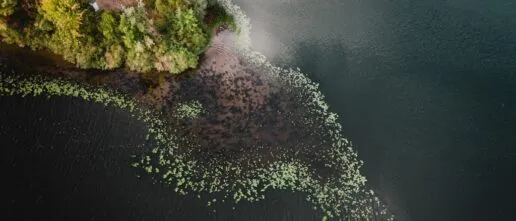The Sabah biodiversity experiment (SBE) is one of the largest scientific investigations into forest ecology and restoration. For the next half century scientists form all over the world will try to answer questions such as these:
How does biodiversity affect the functioning of tropical forest ecosystems?
In particular: Can restoring the biodiversity of degraded forests improve carbon sequestration and the rates of other ecosystem processes?
In 2001 three scientists from the U.K. started to establish one of the largest ecological experiments ever set up. It covers an area of 500 hectares and it should go on for at least 60 years. Its aim is to find out whether and how much biodiversity is needed in order to maintain crucial ecosystem services such as flood protection or carbon sequestration.
The experiment is sited in north-eastern Borneo near the Royal Society’s Danum Valley research station in Sabah. The station is set within a larger area of previously logged land – an ideal place to study the effects of forests loss on spot. By systematically re-growing the lost forest, the scientists can find out exactly how much and what biodiversity is contributing to ecosystem services.
The researchers divided the 500 hectares of the experiment into 124 four-hectare plots like a checkerboard. In each field they planted around 1300 tree seedlings. Some plots contain monocultures of only one tree species. Some contain a 4-species mixture and some a diverse 16-species mixture.
Over the years, every such replanted plot will be compared with a set of unplanted ones. This allows the scientists to find out exactly, what the effect of biodiversity on ecosystem services is. They will see whether diverse plots retain more rainwater than monocultures or whether they can store more carbon. The answers this experiment can provide are innumerable and only dependent on the amount of investment it receives.
The Sabah project wants to test how increasing levels of tree diversity in the replanted areas will affect timber production, carbon sequestration and other ecosystem processes. It wants to find out which species exactly are preventing us from mudslides, and which combination of species has the greatest potential for taking carbon dioxide out of the atmosphere and store it in the wood of the trees.
Related Outputs
Tropical forests post-logging are a persistent net carbon source to the atmosphere
Carbon sources and sinks in recovering logged forests Are recovering logged forests a carbon sink due to increased tree growth rates or a carbon source due to carbon losses from soil organic matter and deadwood? Our research shows that sources outweigh sinks for at least the first decade after logging.
Logged tropical forests have amplified and diverse ecosystem energetics
Metabolic approach to forest ecosystem health Do metabolic ecology approaches offer a useful new approach to assessing ecosystem health and nature recovery? Our research uses areas of old growth and selectively logged forest to assess this approach.
Positive effects of tree diversity on tropical forest restoration in a field-scale experiment
Experiments under controlled conditions have established that ecosystem functioning is generally positively related to levels of biodiversity, but it is unclear how widespread these effects are in real-world settings and whether they can be harnessed for ecosystem restoration. We used remote-sensing data from the first decade of a long-term, field-scale tropical restoration experiment initiated in […]
Positive effects of tree diversity on tropical forest restoration in a field-scale experiment
Active restoration of selectively logged forest The dipterocarp trees that dominate the lowland forests of Southeast Asia have traits that mean they may be slow to naturally recover from selective-logging and other disturbances. Can active restoration techniques accelerate forest recovery? Our research uses the experimental treatments of Sabah Biodiversity Experiment to assess the effectiveness of […]
Tropical forest clearance impacts biodiversity and function, whereas logging changes structure
The natural value of recovering selectively logged forests Large areas of forest in Borneo have been selectively logged and are now undergoing recovery – how do these selectively logged forests differ from their undisturbed old growth counterparts and what are the consequences if they are converted to oil palm plantation?




